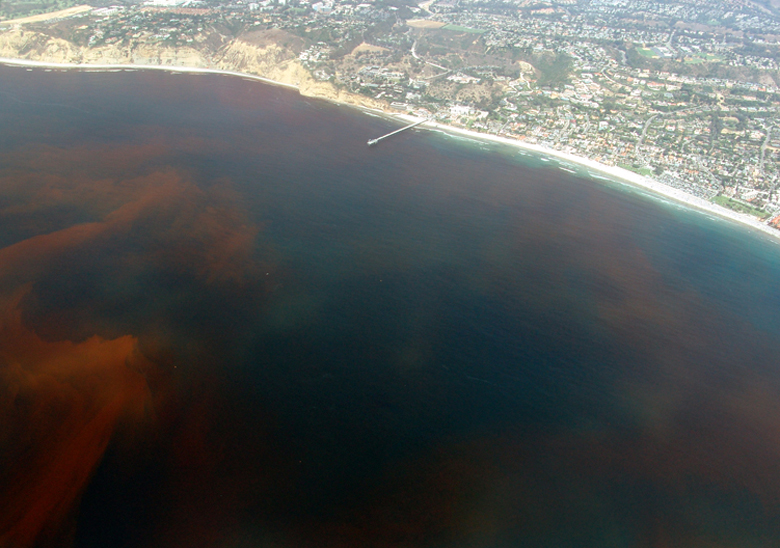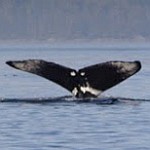Toxic Algae Blooms
Algae blooms are increasing in frequency and intensity. Due to the frequency of algae blooms and the expansion of the areas affected by them year after year, scientists are concerned and are monitoring the blooms because they are a serious threat to marine life.
These blooms occur naturally in the spring and summer when nutrients that have been deposited on the ocean floor are stirred up by currents and move towards the surface. In warmer waters, plankton that feed on this feast of nutrients ‘’bloom’’ and their numbers increase exponentially. Once this enormous quantity of plankton die, their decay produces a reaction that removes oxygen from the water. The water becomes anoxic (deprived of oxygen) and living creatures who need oxygen succumb and die. These anoxic areas of water are named dead zones because their seabeds are covered with dead animals, such as fishes, crabs, snails, sea stars, shrimps, clams and worms. Dead zones are a seasonal or permanent feature of 400 places worldwide and cover 100 000 squares miles. Waters on the continental shelves are the most productive and support a great diversity of life, life that is now threatened frequently by algae blooms.
Many algae blooms can be attributed to humans. Plankton feed on nutrients such as phosphorus and nitrogen. The concentration of these nutrients has greatly increased in the waters along coastal areas since runoff from cities, industrial sewage, and agricultural fertilizers contain an enormous quantity of phosphorus and nitrogen. These sources provides more nutrients for plankton, hence more blooms. .
Algae blooms can be toxic, to man and to ocean animals. Red and brown tides are an example. Red tides are caused by algae that produce toxins. These toxins are absorbed by shellfish and can cause severe digestive and nervous system symptoms if consumed by humans (paralytic and amnesic shellfish poisoning). These toxins are irritants if inhaled and can cause itchy and runny eyes, throat and other more severe respiratory system symptoms. They can also be ingested by marine mammals and cause death. During the summer of 2015, over 30 whales were found dead on the shores of Alaska and British Columbia. Scientists strongly believed the deaths of the whales were caused by a large algae bloom, which affected and poisoned the prey (e.g. krill) of the whales.
 An algae bloom (“red tide”) forms off the coast of California, U.S.
An algae bloom (“red tide”) forms off the coast of California, U.S.
What can you do?
- Decrease runoff of chemicals from agricultural lands by supporting organic farming.
- Use environmentally-sensitive cleaners and detergents in your home.
- Support stricter laws related to industrial wastes.
- Refrain from dumping chemicals down the drain or down the toilet.


